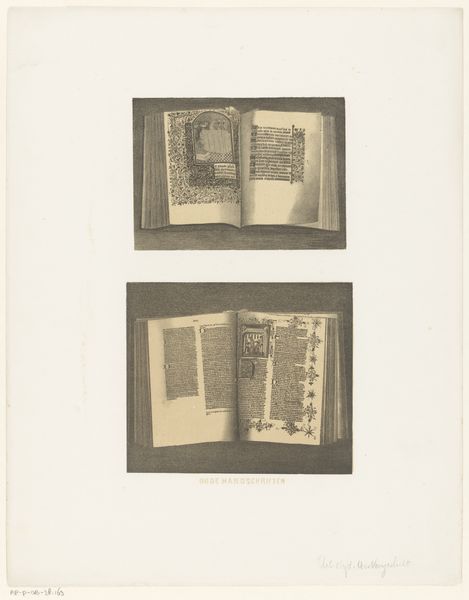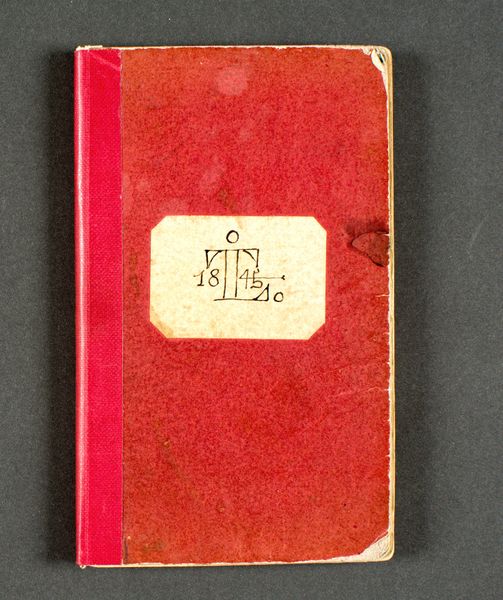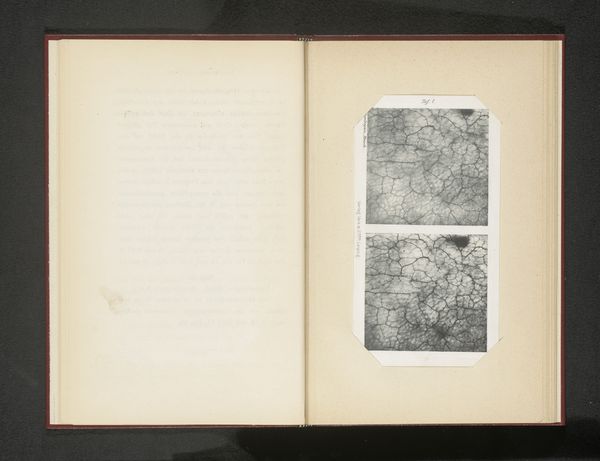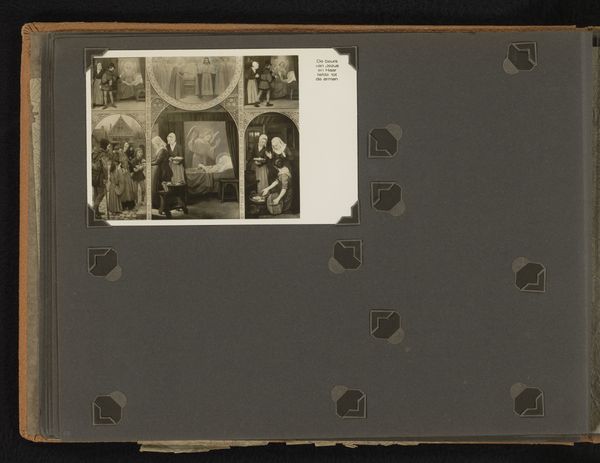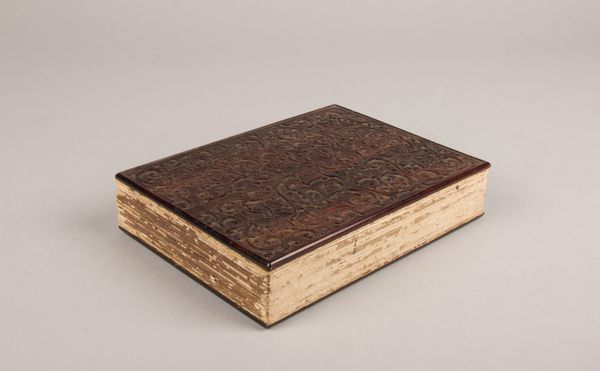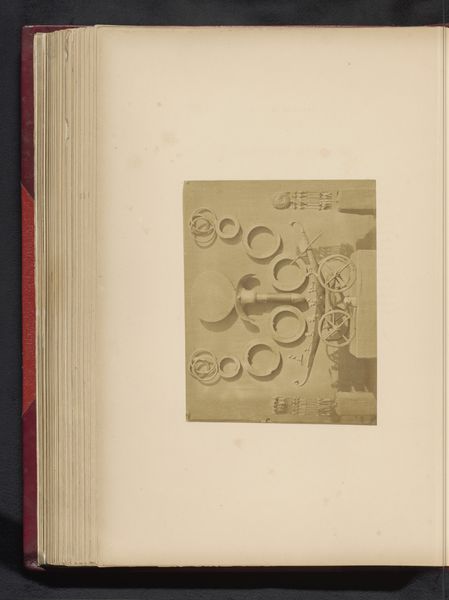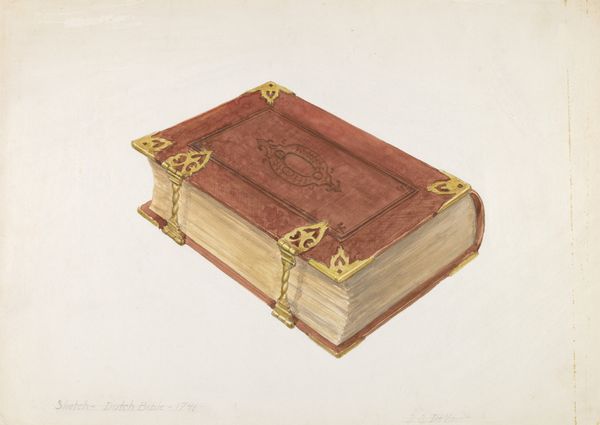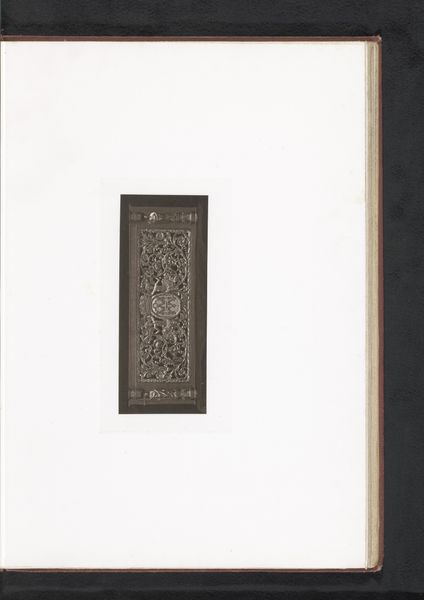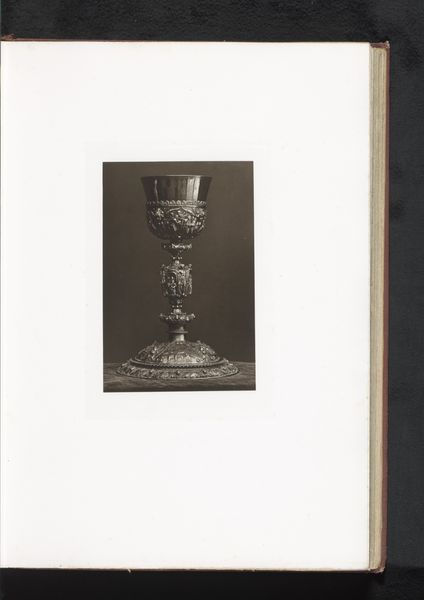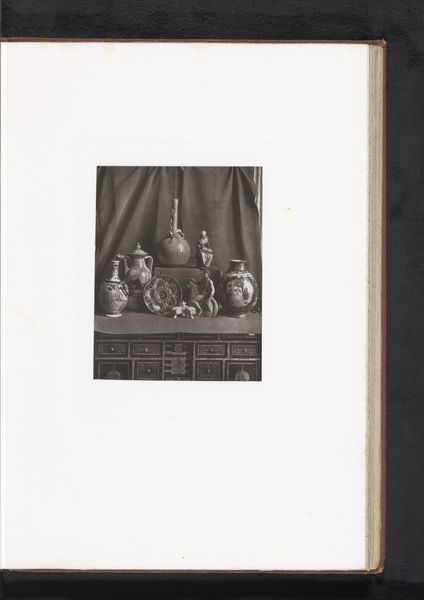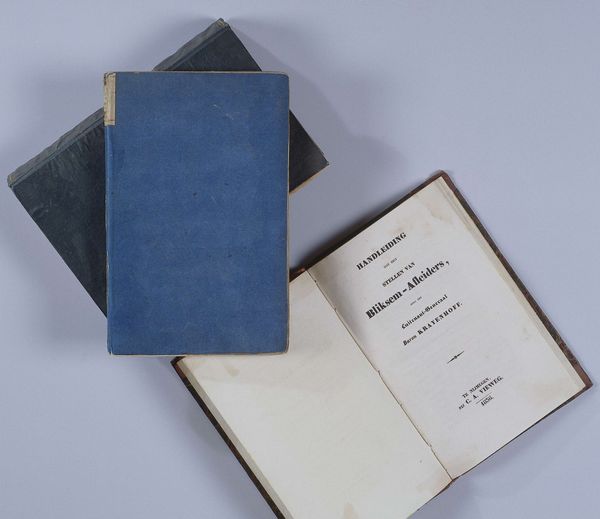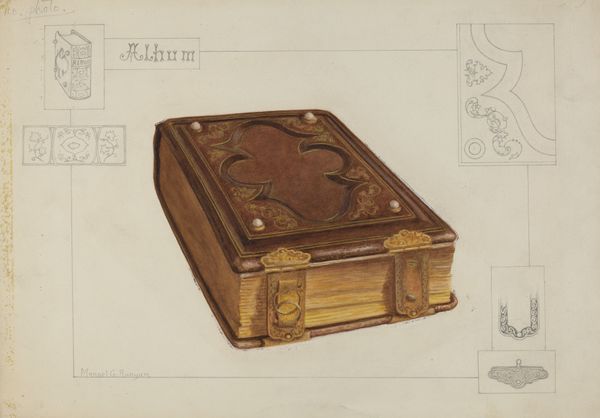
De Gli Habiti Antichi, et Moderni di Diuerse Parti del Mondo Libri Dve, Fatti da Cesare Vecellio et con discoursi da Lui Dichiarti. Con Privilegio" 1590
0:00
0:00
print, textile, paper
# print
#
book
#
sculpture
#
textile
#
paper
#
text
#
11_renaissance
#
italian-renaissance
Dimensions: 19 × 12.5 × 6 cm (7 1/2 × 4 15/16 × 2 3/8 in.)
Copyright: Public Domain
Curator: What immediately strikes me is the visual order, the careful placement of elements within the frame. Editor: Yes, and for me, it's how meticulously crafted this book appears; almost like a sculpture designed to both inform and to subtly broadcast messages of cultural authority and historical record. Curator: Indeed. The piece we are looking at today is from Cesare Vecellio's "De Gli Habiti Antichi, et Moderni di Diuerse Parti del Mondo Libri Dve, Fatti da Cesare Vecellio et con discoursi da Lui Dichiarti. Con Privilegio," dating back to 1590. The book contains prints, paper and textiles. It resides here at the Art Institute of Chicago. Its detailed images, organized composition, and the texture inherent in printmaking itself draw my attention. Editor: This was an important book showcasing world cultures to Renaissance Italy. The images document and, perhaps inadvertently, solidify the period's understanding of the diverse global identities being encountered. These books provided knowledge, but they were also instruments that played a significant role in the ongoing colonial and capitalist enterprises and discourses about identity, power, and trade that are relevant even today. Curator: The engravings themselves have an impressive clarity, almost photographic in their detail. One can practically feel the texture of the fabrics represented in the costume illustrations. Editor: Absolutely. And I am drawn to how the detailed illustrations act as a visual assertion of a Venetian-centric perspective of these cultures and traditions. Curator: A formal assessment also necessitates discussing how Vecellio organized the information presented in this visual compendium, structuring what he perceived as "world knowledge" through carefully designed compositions. Editor: I'd suggest also, that we interpret this not merely as structured knowledge, but through lenses that reveal gender, and even, the biases related to class that subtly surface as certain people get featured and others overlooked. What stories were not important enough to be captured, documented, shared? Curator: Those omissions are precisely where subsequent formal inquiry should commence. Analyzing these deliberate decisions that influenced the organization and presentation of visual narratives can uncover an objective portrayal of reality. Editor: Certainly. I'm seeing so much beyond just what meets the eye. And I will never unsee all the cultural biases that I feel were inscribed onto its pages!
Comments
No comments
Be the first to comment and join the conversation on the ultimate creative platform.
